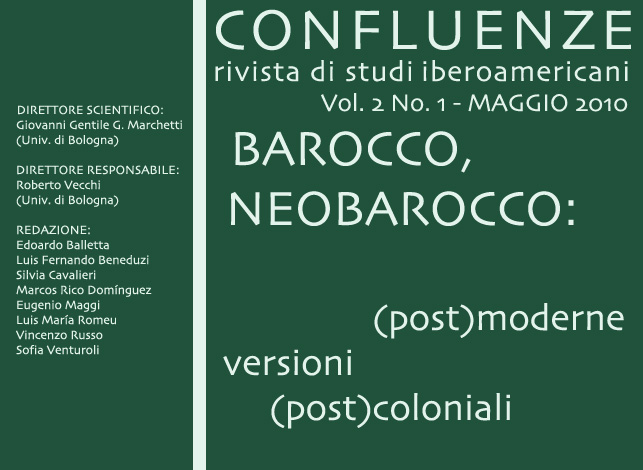La cueva de Salamanca de Cervantes y El dragoncillo de Calderón: algunos aspectos del teatro barroco español
DOI:
https://doi.org/10.6092/issn.2036-0967/1862Abstract
This paper analyses two interludes that share a number of folk motifs in order to highlight Cervantes’ tendency to explore forbidden areas, beyond sacred and social ties, and his inclination to demystify institutions apparently untouchable. At the same time it is underlined how Calderón, despite his inflexible aesthetic and moral principles, manages to represent, by breaking down the essential conflicts of his time, the irresolvable ambivalence between a profound pessimism and a burlesque, playful vision of the world. Keywords: Miguel de Cervantes, La cueva de Salamanca, Calderón de la Barca, El dragoncillo, comparative study. En este trabajo dedicado a dos entremeses que comparten diferentes motivos folclóricos, se pone de relieve la tendencia cervantina a explorar zonas prohibidas, más allá de los vínculos sagrados y sociales, que desmitifica comportamientos e istituciones aparentemente inatacables. Y al mismo tiempo se subraya cómo Calderón, a pesar de sus inflexibles principios estéticos y morales, consigue representar, descomponiendo los forzosos conflictos de su época, una ambivalencia irresoluble entre un profundo pesimismo y una visión burlesca y lúdica del mundo. Palabras clave Miguel de Cervantes, La cueva de Salamanca, Calderón de la Barca, El dragoncillo, estudio comparativoDownloads
Come citare
Contadini, L. (2010). La cueva de Salamanca de Cervantes y El dragoncillo de Calderón: algunos aspectos del teatro barroco español. Confluenze. Rivista Di Studi Iberoamericani, 2(1), 130–149. https://doi.org/10.6092/issn.2036-0967/1862
Fascicolo
Sezione
DOSSIER
Licenza
Copyright (c) 2010 Luigi Contadini
I diritti d'autore e di pubblicazione di tutti i testi nella rivista appartengono ai rispettivi autori senza restrizioni.
La rivista è rilasciata sotto una licenza Creative Commons Attribuzione 4.0 Internazionale (codice legale completo).
Vedere inoltre la nostra Open Access Policy.
Metadati
Tutti i metadati dei materiali pubblicati sono rilasciati in pubblico dominio e possono essere utilizzati da ognuno per qualsiasi scopo. Questi includono i riferimenti bibliografici.
I metadati – riferimenti bibliografici inclusi – possono essere riutilizzati in qualsiasi formato senza ulteriori autorizzazioni, incluso per scopo di lucro. Chiediamo cortesemente agli utenti di includere un collegamento ai metadati originali.






